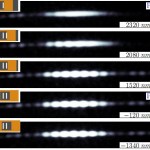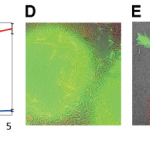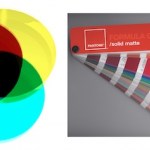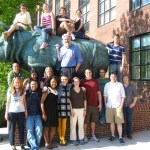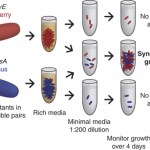experiment
Yesterday's big post on why I think people should embrace scientific thinking in a more conscious way than they do already (because my claim is that most people already use scientific thinking, they're just not aware that they're doing it) is clearly a kind of explanation of the reason behind my next book, but what about the previous two? How does teaching people about modern physics through imaginary conversations with my dog serve the general goal of getting people to think more scientifically?
The following is a bit of a retcon-- after all, the proximate cause of my writing those books was…
A while back, I explained how polarized sunglasses work, the short version of which is that light reflected off the ground in front of you tends to be polarized, and by blocking that light, they reduce the effects of glare. This is why fishermen wear polarized sunglasses (they make it easier to see through the surface of water) and why they're good for driving (they cut down on glare off the road ahead). I almost exclusively buy polarized sunglasses, because I like this feature.
But let's say you have a pair of polarized sunglasses that broke, because they were cheap to begin with (such as…
A month and a half ago, I reported on a simple experiment to measure the performance of a timer from the teaching labs. I started the timer running at a particualr time, and over the next couple of weeks checked in regularly with the Official US Time display at the NIST website, recording the delay between the timer reading and the NIST clock.
As a follow-up experiment, I did the same thing with a different timer, this one a Good Cook brand digital timer picked up for $10 in the local supermarket, and the same Fisher Scientific stopwatch/timer as the first experiment, with the Fisher…
The first of the five categories of active research at DAMOP that I described in yesterday's post is "Ultracold Matter." The starting point for this category of research is laser cooling to get a gas of atoms down to microkelvin temperatures (that is, a few millionths of a degree above absolute zero. Evaporative cooling can then be used to bring the atoms down to nanokelvin temperatures, reaching the regime of "quantum degeneracy." This is, very roughly speaking, the point where the quantum wavelength of the atoms becomes comparable to the spacing between atoms in the gas, at which point the…
The big physics story of the week is undoubtedly the new limit on the electric dipole moment (EDM) of the electron from Ed Hinds's group at Imperial College in the UK. As this is something I wrote a long article on for Physics World, I'm pretty psyched to see this getting lots of media attention, and not just from physics outlets.
My extremely hectic end-of-term schedule and general laziness almost make me want to just point to my earlier article and have done with it. But really, it's a big story, and one I've been following for a while, so how can I pass up the chance for a ResearchBlogging…
Ebola has long been associated with wildlife. From the early days, bats were viewed as a potential reservoir (though it wasn't confirmed that they actually harbored the virus until 2005). Contact with wild animals--particularly primates which were butchered for food--was also long thought to be a risk factor, and now we know that primates can become ill with Ebola and pass the virus to humans.
What hadn't been examined until 2008 were pigs. I mean, it's not exactly the animal you associate with central Africa, where many of the Ebola cases have been concentrated. However, pigs are much more…
When I was looking over the Great Discoveries series titles for writing yesterday's Quantum Man review, I was struck again by how the Rutherford biography by Richard Reeves is an oddity. Not only is Rutherford a relatively happy fellow-- the book is really lacking in the salacious gossip that is usually a staple of biography, probably because Rutherford was happily married for umpteen years-- but he's an experimentalist, and you don't see that many high-profile biographies of experimental physicists.
When you run down the list of famous and relatively modern scientists who have books written…
Several people blogged about a new measurement of gravitational states of neutrons done by physicists using ultracold neutrons from the Institut Laue-Langevin in France. I had to resort to Twitter to get access to the paper (we don't get Nature Physics here, and it's way faster than Inter-Library Loan), but this is a nice topic for a ResearchBlogging post, in the now-standard Q&A form:
OK, why was this worth begging people on Twitter to send you a copy? The paper is a demonstration of a sort of spectroscopy of neutrons bouncing in a gravitational field. They showed they could drive…
Symbiosis is everywhere. From the Greek for "living with," symbiosis is simply a close association between two different species in nature. These relationships can be mutualistic, parasitic, or somewhere in between. Bacterial symbionts live inside bodies, like the bacteria that help us and other animals digest our food, and they live inside cells, like the bacteria that live in plant roots and provide their hosts with nitrogen. They can be metabolic, hygienic, or photosynthetic; ectosymbiotic, on the host surface, or endosymbiotic, inside the host's cells. Back in the 1860's biologists…
My friend Patrick is embarking on a 48 experiment, studying circadian rhythm and destroying his own in the process. He's also embarking on a social media experiment, live-streaming the whole thing on ustream.
Tune in to watch real science in action and the effects of sleep deprivation on scientists! You can even ask him questions during the three hours between experimental time points!
The physics book generating the most bloggy buzz in the latter part of 2010 would have to be Ian Sample's Massive: The Missing Particle that Sparked the Greatest Hunt in Science, about the as yet undetected particle known as the Higgs boson. Detecting the Hiigs is the most immediate goal of the Large Hadron Collider, so it's a topic that's in the air at the moment, so this book was inevitable-- in fact, the publisher sent me not one but two review copies. I gave one away, but that makes me feel even more guilty for taking months to get around to reviewing it.
This is, basically, a concise…
Most of what would ordinarily be blogging time this morning got used up writing a response to a question at the
Physics Stack Exchange. But having put all that effort in over there, I might as well put it to use here, too...
The question comes from a person who did a poster on terminology at the recently concluded American Geophysical Union meeting, offering the following definition of "data":
Values collected as part of a scientific investigation; may be qualified as 'science data'. This includes uncalibrated values (raw data), derived values (calibrated data), and other transformations of…
It's the last week of the (calendar) year, which means it's a good time to recap the previous twelve months worth of scientific news. Typically, publications like Physics World will publish a list of top ten physics stories of 2010, but we're all Web 2.0 these days, so it seems more appropriate to put this to a poll:
What is the top physics story of 2010?survey software
I've used the Physics World list as a starting point, because you have to start somewhere. I added a few options to cover the possibility that they left something out, and, of course, you know where the comments are.
This…
Earlier this week, I talked about the technical requirements for taking a picture of an interference pattern from two independent lasers, and mentioned in passing that a 1967 experiment by Pfleegor and Mandel had already shown the interference effect. Their experiment was clever enough to deserve the ResearchBlogging Q&A treatment, though, so here we go:
OK, so why is this really old experiment worth talking about? What did they do? They demonstrated interference between two completely independent lasers, showing that when they overlapped the beams, the overlap region contained a pattern…
We can babble philosophically about whether or not what we call "red" looks the same from another person's eyes, we can compare the adjectives we use to specify colors--is it maraschino red or cayenne?--but when we're talking to our computers, categorizing flowers, designing objects for mass production, branding a company, or establishing a flag's official colors we have to be able to be specific about which exact shade of red we want.
These days we have standard color systems that define colors as specified mixes of red, green, and blue pixels on screen, specific mixtures of pigments in…
Mammalian cells need something to hold on to before they can stick to each other and form tissues. The plastic dishes that cells grow on in the lab need to be first coated with special chemicals that grab the cells and convince them to stick. Once the first batch of cells is down they start forming their own matrix of proteins and fibers that can grab new cells as they are formed, slowly creating a dense layer of cells. Tissue engineering aims to make three dimensional, biodegradable scaffolds that cultured cells can grow on to form body parts, like the ear-shaped bit of cow cartilage that…
Melissa at Confused at a Higher Level offers some thoughts on the relative status of experimental vs. theoretical science, spinning off a comprehensive discussion of the issues at Academic Jungle. I flagged this to comment on over the weekend, but then was too busy with SteelyKid and football to get to it. since I'm late to the party, I'll offer some slightly flippant arguments in favor of experiment or theory:
Argument 1: Experimentalists are better homeowners. At least in my world of low-energy experimental physics, many of the skills you are expected to have as an experimental physicist…
My good friend and labmate just published an awesome paper: "Emergent cooperation in microbial metabolism." His experiment started with 46 strains of E. coli that had mutations in their metabolic pathways that prevented them from being able to grow without supplementing the media with extra metabolites. Alone they died, but grown together in the same tube, many pairs of mutants were able to feed each other the missing metabolite. Metabolic cooperation was the key to survival.
Measuring and understanding metabolic cooperation can be used to build stronger, more predictive models of…
Over at Confused at a Higher Level, Melissa offers an alphabetical list of essential supplies for a condensed matter experimentalist at a small college. This is a fun idea for back-to-school time, so I'll steal it, and offer the following alphabetical list of essentials for Atomic, Molecular, and Optical physics at a small college, kind of a condensed version of the three part series I did a few weeks ago.
A is for Acousto-optic modulator This is a device that uses sound waves in a crystal to deflect light and shift its frequency. It's essential for rapid control of laser properties.
B is for…
A lot of people have been blogging and Twittering about this subway map of science, which puts various branches of science in the place of the lines on the London Underground map, showing connections between them. It's a huge graphic, but a kind of cool image.
I do, however, have a problem with it, which is illustrated by the key to the lines shown at right. The category of physics is presented as "Theoretical Physics and Quantum Mechanics." I have no problem with the quantum part, as quantum mechanics is one of the greatest intellectual achievements in human history. I do have a problem…
